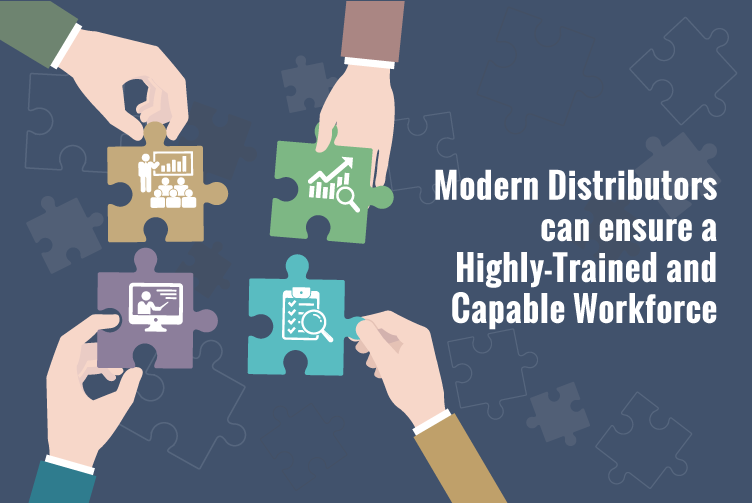Organizations with a global network of distributors often struggle to collect high-quality data for effective decision-making as they try to align with multiple independent small businesses.
There are practical challenges when managing distributors in developing regions like the APAC, where every business uses a data collection framework that is not standardized. Besides, distributors have little knowledge or motivation to execute “standardized” data collection and reporting practices.
What are some of the key problems when it comes to data collection from a wide and dispersed distributor network? How can data aggregation help?
Let’s consider these questions.
5 key problems with Data collection
As more distribution companies try to leverage business value from their data, it can lead to myriad problems with data collection.
Here are 5 key problems in data collection that brands must address when selling products through their distributor channels:
1. Poor data quality
Data quality is often dependent on manual processes or the credibility of the executive making the data entry. With a wide distribution network, it is challenging to confirm or verify the data being collected from various sources or being entered into different systems. Depending on the available time and resources, data-handling teams in distributor-based companies cannot always depend on the completeness of collected data or report any missing data.
Adding to that, most data collection measures are not designed for avoiding data quality issues. The collected data needs to go through an efficient profiling and cleansing process to fix errors, inconsistency problems, or any other related problems.
2. Lack of relevant business data
In today’s environment dominated by Big Data, organizations need to find relevant insights from massive volumes of structured, unstructured, and semi-structured data sources.
With the explosion of unorganized Big Data, organizations find it complex to collect data that stays relevant to their business functions and processes. As global distributors use a wide variety of internal systems, integrating relevant data can be a complicated process even for experienced data scientists and experts.
Further, product organizations facing consistent sales pressure would have core business functions that are not always streamlined to produce high-quality data. For example, administrative data may only cater to their internal needs (for example, collecting the customer’s contact details) without any added information related to their preferred products, demographics, purchase history and other relevant data.
3. Lack of context
For a global distributor network system, there is a lack of efficient market research in different regions (like APAC), which can influence the context of collecting data. This leads to a lack of context on the various factors that can affect the efficiency of distributor channels. For example, language-related constraints can lead to the use of different data collection methods or create gaps in data collection in a particular region, thus adding to the lack of standardization.
Similarly, customer data could be collected in different situations, and the accuracy of the collected data is dependent on the situational context. On the same note, the amount of customer information collected can also vary depending on the real-time situation.
4. Insufficient training
In most cases, distribution partners may not have the human personnel (or resources) who are trained for collecting data, else it may not be their primary job role. Internal staff may lack the context of why they need to collect data or may not have the right questions to ask. Proper workforce training (including sales customer support teams) is a necessary part of every data collection initiative, without which there could be missing data or low-quality data.
5. High complexity
Modern distributor networks are not homogeneous and can differ even within the same geographical region or country. The wide scope of collecting data adds to the complexity and inconsistency across various distributor services. For instance, it is difficult to compare sales-related data between various product groups or within the target demographic group.
Similarly, it is complex to group “diverse” individuals within the same customer profile or demographic group, or the collected data may not accurately represent every profile completely nor accurately.
Can data aggregation provide the solution to these listed problems in data collection? Let us discuss next.
How a Data Aggregation solution can help
By definition, data aggregation is all about collecting and compiling information and preparing an integrated dataset that can be used for data analytics. With a robust data aggregator tool, distribution-driven organizations can collect structured information based on different variables including age, geographical location, and demographics.
Effectively, data aggregation platforms can track the data origin from the initial source and establish an efficient audit trail. Essentially, data aggregation tools perform the following three steps, namely:
- Data collection, or the process of extracting data from various sources and storing them on cloud, on-premises, or any data warehouse.
- Data processing, where the collected data is processed and interpreted using machine learning algorithms. Processing methods can vary depending on what the data will be used for.
- Data presentation, or the process of delivering an accurate data-based presentation in a summarized form.
The right data aggregation tool can help in:
- Extracting relevant data that can meet the needs of any distribution-based company.
- Modifying data to meet a prescribed format to be used in data analytics.
- Presenting a visual representation of the aggregated data for actionable business intelligence.
Conclusion
For effective business analytics, organizations need to collect and analyze large volumes of data that can lack cohesion and limit the decision-making process. Looking at the various problems in collecting data from a wide base of B2B distributors, data aggregation is the plausible solution to leverage business value from the data.
The Amshuhu iSteer solution is a productive business solution that simplifies how distributors can collect and use their data more efficiently. With the iSteer solution, organizations can now adopt a “customer-centric” approach instead of the traditional “product-centric” approach.
Do you want to know more? It’s time to contact us.




